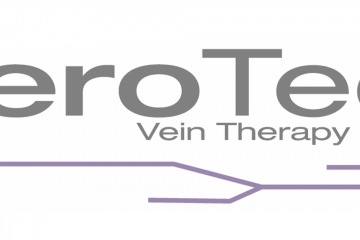HOSPITAL’S B-HIVE SYSTEM PACKS FULL MEDICAL BROADCAST SYSTEM INTO ONE UNIT
 A great deal of advanced medical training involves witnessing surgeries and listening to the guidance, suggestions, and recommendations of the people performing them. Typically, this is done on-site, which often involves costly travel expenses plus a lot of time wasted simply getting to the lesson.
A great deal of advanced medical training involves witnessing surgeries and listening to the guidance, suggestions, and recommendations of the people performing them. Typically, this is done on-site, which often involves costly travel expenses plus a lot of time wasted simply getting to the lesson.
There are alternatives available, such as hiring a video crew to film and broadcast a surgery, but this is an expensive and often not very practical in small operating theaters.
The Florida Hospital Nicholson Center, having its own production crew, decided that they can cut educational costs while making it easy for clinicians to broadcast from the O.R. Their new B-Hive system is an all-in-one product that includes cameras and microphones, as well as a device which can take inputs from fluoroscopes and other imaging tools, and an easy way to transmit all the data to remote computers, tablets or smartphones.
Currently the B-Hive is being used for medical device companies to train doctors on new products, and for medical conference broadcasting, but applications in business, government and education are obvious.
Steven Thekan, co-creator of the B-Hive and digital services supervisor of the Florida Hospital Nicholson Center, described the B-Hive as a remotely operated, bi-directional, mobile broadcast studio.
“Here, we provide direct surgeon-to-learner communication capabilities using multiple vantage points to make sure every moment is captured,” Thekan said. “This unique and customized learning experience increases the level of interaction available to remote learners.”
The B-Hive can accept almost any video feed that is common in an O.R., including medical robots, C-Arms, ultrasound imaging devices and laparoscopic cameras.
He said the key differentiator between the B-Hive and existing platforms like Skype is that this hardware comes with a service element, in which a remote engineer controls the video feeds and provides technical support and troubleshooting.
“The output is a fully produced broadcast with multiple pictures in pictures, lower third graphics and even playback for graphics and commercials. Similar to Skype, you would be able to access this broadcast from a desktop, laptop, tablet or cell phone.”
TECHNOLOGY TRANSFORMING
MEDICAL TRAINING
Technological innovations, such as the all-in-one B-Hive broadcasting studio from The Florida Hospital Nicholson Center, are transforming medical training and could help ease a global shortage of healthcare professionals.
Steven Thekan, co-creator of the B-Hive and digital services supervisor of the Florida Hospital Nicholson Center, described the B-Hive as a remotely operated, bi-directional, mobile broadcast studio. The B-Hive can accept almost any video feed that is common in an O.R., including medical robots, C-Arms, ultrasound imaging devices and laparoscopic cameras.
“Here, we provide direct surgeon-to-learner communication capabilities using multiple vantage points to make sure every moment is captured,” Thekan said. “This unique and customized learning experience increases the level of interaction available to remote learners.”
Another example is Shafi Ahmed, a British colorectal surgeon who last year used Snap Inc.’s high-tech spectacles and the Snapchat photo-sharing app to broadcast a real-time hernia operation to doctors and millions of curious viewers, is another example, according to Bloomberg Technology.
Dr. Ahmed, who connected with more than two million viewers for that Snapchat surgery, said he sees the social media platform as a promising way to help train the next generation of doctors. And such efforts could help ease a projected global shortage of 15 million healthcare workers by 2030.
Researchers are studying the effectiveness of digital learning to see if it is equivalent to traditional modes of education as medical schools and other organizations experiment with tech-driven tactics.
Additionally, Stanford Medicine is using a new software system that combines imaging from MRIs, CT scans and angiograms to create a three-dimensional model for physicians and patients to see and manipulate like a virtual reality game.
“Medical education is ripe for disruption,” Marc M. Triola, MD and associate dean for educational informatics at NYU Langone Health in New York, told Bloomberg. “Cutting-edge technologies such as virtual and augmented reality may quickly become standard-of-care and mainstream.”
But live-streaming surgeries has its critics. John Quinn, a vascular surgeon in Brisbane, Australia, and the executive director of surgical affairs with the Royal Australasian College of Surgeons, told Bloomberg it puts patient privacy at risk and isn’t a substitute for the experience of interacting with real patients.
But researchers say the medical education system needs to keep pace with the latest technology and analytics tools to prepare physicians for an increasingly data-driven industry. VTN


